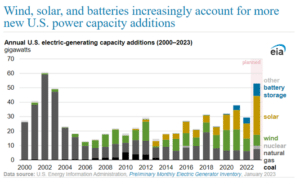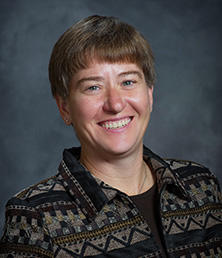Across the U.S. agricultural landscape there is a growing demand for renewable energy sources. As clean energy policies and tax credits stimulate the energy transition, we’re seeing new opportunities for American farmers, ranchers, and landowners to make additional income from their land.
Wind and solar are the two quickest growing energy sources in the country – as of 2023, wind was providing about 141.3 GW of wind capacity, or about 12% of the U.S. total energy source and developers plan to add another 7.1 GW in 2023. Over half of the planned renewable energy installations for 2023 are solar. These projects all require land.

“Large corporations are proactively seeking the use of land for sustainability – especially for wind and solar energies – where empty land can be rife with additional land revenue opportunities.” says Pinion renewable energy advisor, Robert Veldman. “However, approaching these opportunities with some healthy hesitation is wise.”
What does this mean for farmers?
As opportunities increase, Pinion wants to make sure that farmers are equipped with education to make the best informed business decisions for their operations. For starters, that means finding the right financial terms for your market area, land value protections, the right developer partner, and ensuring that the project is economical and can be built for connection into the electricity grid.
Here are important things to consider and keep in mind for any renewable energy opportunities:
Finding the right deal:
- Does your agricultural land qualify by being close to transmission and substation?
- Compare multiple bids and look for fair market value.
- Hire an advisor, not just an attorney, to interpret and negotiate the lease in your favor that will be with you for generations.
Finding the right developer:
- Is this a reputable company with experience in your state? Be aware of scammers, flippers, and land grabbers in the energy field.
- Does the company have an identified source to sell the energy to? Be sure they aren’t a middleman without a buyer.
- Does the company value land management during and after the lease timeframe? e., soil management, a bond to salvage land back to a natural state, reclamation value, and weed management.
Can it be built?
- Is your land compatible with the grid/system? e., proximity to a transmission line or substation for energy transfer.
- Do you have enough land that the developer desires? Many have a minimum acreage requirement for all future projects for economy of scale or grid capacity.
- Do you have land in a desirable area? e., near an out-of-commissioned power plant.
- Do you have flat land for solar or elevation for wind?
- Does the developer want to pay over market price for rent making the project uneconomic to build?
Pinion’s team of land management and renewable energy specialists help landowners, farmers, and ranchers to explore whether an opportunity is in the best interest of their farm or ranch for the long run. Contact a Pinion sustainability advisor to learn more.











